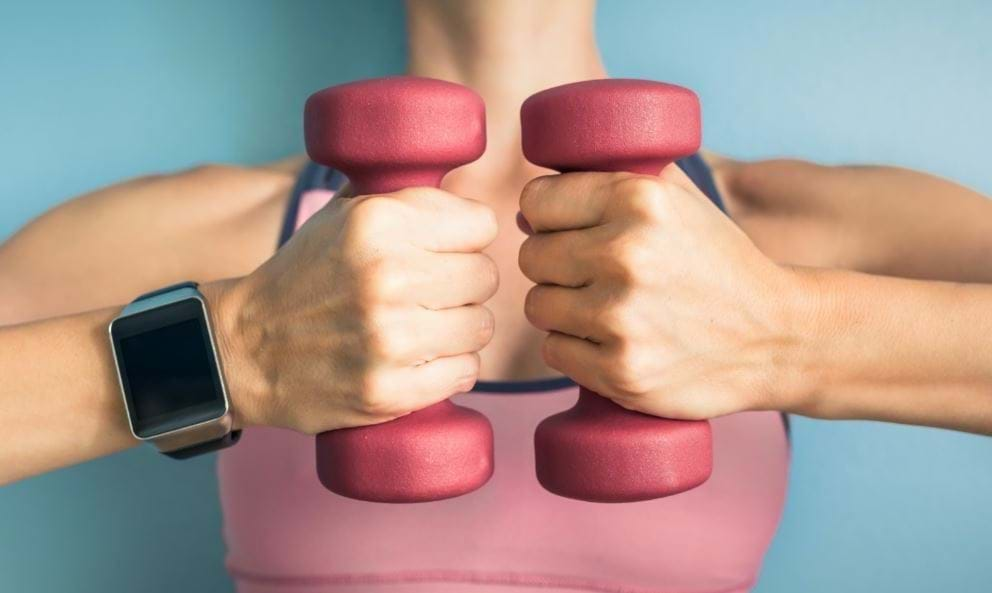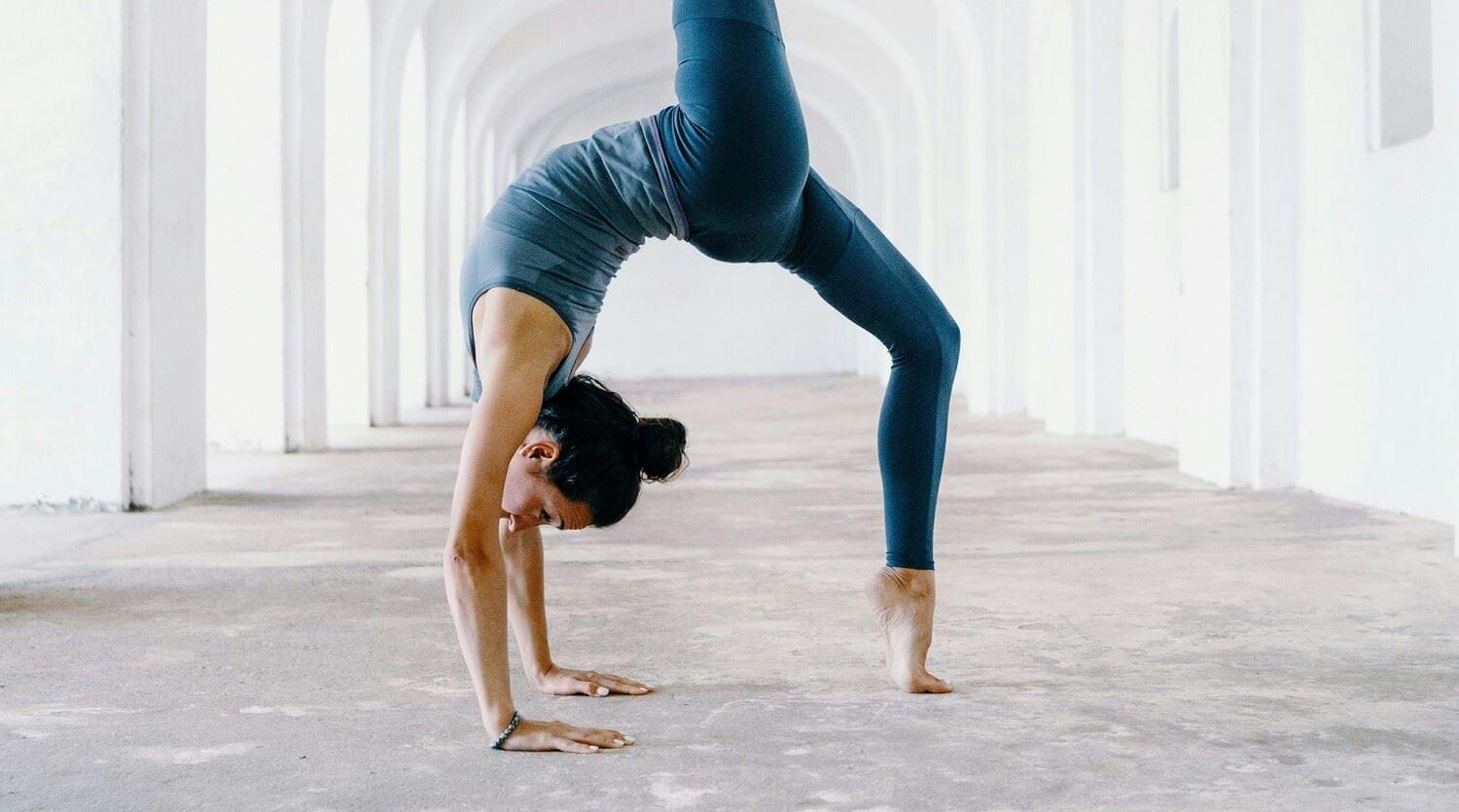Dumbbell Workouts For Beginners

Whether you’re new to the gym, or a more advanced lifter, dumbbells are a great piece of kit that can help with your strength goals.
In this blog, PureGym Personal Trainer Reece Dorling looks at the benefits of using dumbbells and shares a full body beginner dumbbell workout plan.
Jump straight to Reece’s beginner dumbbell workout.
What are the benefits of using dumbbells?
There are four main types of kit for building muscle at the gym: dumbbells, barbells, cable machines, and fixed resistance machines. So why should beginners opt for dumbbells?
They are the most accessible piece of free kit available in the gym, so it’s easy to get your workout in, even during busier times.
Dumbbells start at a low weight, so even those starting out with little strength should be able to find a weight that they can use.
They come in a huge range of weights, which means it’s easy to progress resistance.
Dumbbells allow for unilateral movements, which makes it easier to iron out any muscle imbalances, and can work the stabilising muscles.
They can be used for a variety of exercises, and they typically allow a greater range of motion than barbells and machines which encourages joint health and more muscle contractions.
For those who prefer working out at home, or want a mix of home and gym workouts, dumbbells don’t cost a lot – especially with lower weights!
The best dumbbell weight for beginners
Dumbbells come in a range of weights -- at PureGym, our dumbbells start at 2kg and go all the way up to 50kg!
When choosing a starting dumbbell weight for beginners, it's always better to select a low weight and try out the exercise. If you can easily perform the movement with correct form for 12 reps, you can try going heavier -- however, make sure you don't go so heavy that your form suffers.
There is no one single dumbbell that will be right for every exercise -- different muscles in your body will have different strengths. People can typically lift heavier weights for lower body exercises, and compound exercises, than they can for upper body and isolate exercises.
For example, a starting beginner dumbbell weight kg for bicep curls might look like 2kg, while squats could be 7kg.
How often should beginners do dumbbell workouts?
When it comes to building muscle, the rule of thumb is to hit train muscles at least twice a week, while leaving at least a day's rest between working the same muscle group twice. For beginners, doing three full body workouts each is a good target.
As you get more advanced and want to incorporate more accessory work, you may want to look at other workout splits that allow you to focus each workout on a specific body part.
How to progress with dumbbells
Progressing at the gym can be really exciting, but it's important not to rush these things. Start with light weights and get familiar with exercises first -- this helps to avoid injuries and makes sure you are getting the most out of each movement. Then, you can look at progressing.
Progression in the gym can be seen in multiple ways:
Improved form. When starting out weight training, it's natural to have limited strength and mobility. Working on these will allow you to achieve a greater range of motion (ROM), which means greater muscle fibre activation. Lifting lighter, with better form, is always better than lifting heavier with poor form or ROM.
Increased weight. One of the most common ways to progress is to gradually increase the weight each week -- for example, going from 10kg to 12kg to 14kg over a period of a few weeks.
Increased reps. Continually increasing the weight each week can be difficult. Many people choose to work within a rep range (e.g. 8-12) and increase the number of reps each week. Once they reach the upper limit, they will go up in weight, which will see a drop in reps. This then continues to cycle.
Full body dumbbell routine for beginners
Now you know the benefits of using dumbbells, it's time to get started! There are lots of dumbbell exercises beginners can do, but this is a specific beginners dumbbell full body workout if you want a routine to follow. It can be done at home or in the gym.
If you're new to strength training, you might experience delayed onset muscle soreness (DOMS) -- make sure to warm up beforehand with some light cardio and dynamic stretches, and cool down after, as this can help to prevent muscle soreness.
For each exercise, do 3 sets of 12 reps, taking a minute rest between each set.
Shoulder Press
- Stand with your feet shoulder width apart and your knees in a soft bend.
- Bring the pair of dumbbells at shoulder height and keep your back in a neutral position. Do not lean back.
- Engage your core and slowly push the dumbbells over your head until your arms are fully extended, making sure that you stand straight and don't lean backwards.
- Slowly lower back down to shoulder height.
Goblet Squat
- Position the dumbbell at chest height and stand with your feet just outside shoulder width apart.
- Engage your core, bring your shoulders back and down whilst looking ahead to keep your spine in neutral alignment.
- Lower down by hinging at your hips and bending your knees as you sit down into the squat.
- The end range of the squat can vary from person to person depending on your mobility, strength, and any previous injuries you have had. Try and aim to get your hips parallel to your thighs as a target. If you can go lower without bending your spine then go for it!
- Pause at the bottom for a brief moment and then push through your feet and slowly stand back up.
Bent Over Row
- Start in a standing position with a pair of dumbbells in your hands, pin your shoulders back and hinge at your hips and lower your torso down until you are just above parallel to the floor. Make sure you keep your spine straight at all times.
- Draw your elbows back as you pull the dumbbells towards your torso and squeeze your shoulder blades together. Only pull the elbows in until they are just past the midline of your stomach.
- Slowly lower the weights back to the starting position and repeat.
Split Squats
Split squats can be very challenging, so if you're struggling to keep your balance or get the form right, try this without dumbbells.
- Hold one dumbbell in each hand and from a standing position, take one step forward into a lunge position. The heel of your back foot should be off the floor.
- Keep your torso upright, slowly lower your back knee to the floor before it touches the floor.
- Push through your front foot to slowly stand back up.
- Complete all reps on one leg before switching to the other. Once you complete a set on each leg, rest for 60 seconds before starting another set.
Lateral Raises
- Stand with your feed shoulder width apart, knees soft, holding a pair of dumbbells by your side.
- Keep your core engaged and spine neutral, slowly raise the dumbbells out to the side until they are level with your shoulders. Keep your elbows slightly bent throughout the movement.
- Once you reach the top of the movement, slowly lower your arms back down to your sides.
Throughout the movement, focus on using your lats (the muscle that runs from under your arm and down your back) to move the weight, rather than shrugging from the shoulders or pushing from the hips.
Romanian Deadlift
- Stand with your feet hip width apart, holding a pair of dumbbells in front of your thighs.
- Push your hips back as you slowly lower your torso down whilst keeping your spine in a neutral position. Keep the weights close to your legs.
- Lower down until the dumbbells are either at knee level or mid-shin -- this varies per person, so make sure you can feel the tension in your hamstrings before you stop.
- Slowly bring yourself back through your hips and squeeze your glutes at the top.
You can repeat this workout 2-3 times in the week, or you can pair it with another full body dumbbell workout like this one or this full body dumbbell HIIT workout. If you want a personalised training plan, why not work with a Personal Trainer like myself.
Ready to start your fitness routine? Find your closest PureGym and join today!


